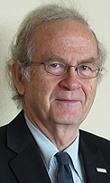
In addition to providing local access to quality health care, the forty-two rural hospitals that are the Rural Wisconsin Health Cooperative (RWHC) are a major driver of Wisconsin’s rural economy.
If rural Wisconsin didn’t have these forty-two local healthcare systems, what would be the impact on our rural economy? Using a formula developed by the University of Wisconsin Extension and the Wisconsin Hospital Association, we estimate a loss of nearly 26,000 jobs–16,000 hospital jobs and another 10,000 community jobs. The lost income would be over $3.6 billion and that is before considering the negative economic impact on the overall vitality of our rural communities.
According to the 2012 landmark study, “Economic Impact of Rural Health Care” by the National Center for Rural Health Works, “quality rural health services in rural communities are needed to attract business and industry as well as attract and retaining retirees. The hospital is one of the largest employers in a rural economy, typically one of the top two employers. Community members particularly appreciate the role that the hospital plays in providing a first line of defense in a medical emergency and working to assure access to care at the local level.”
RWHC and other rural health advocates will continue to fight for public and private payment and policies that support rural health and against those that undermine it. But we can and must do more–we must work across multiple sectors to expand the non-healthcare jobs and opportunities locally available. There are few roles more fulfilling than providing local access to quality healthcare, but that requires us to assure a stable if not growing local population. And that requires jobs.
Amongst various viable approaches, one approach worth our attention was outlined a couple of years ago in the business magazine Forbes, “To Revitalize Small-Town America, Focus on the Future of Work.” The author, Tarun Wadhwa, describes the rise of a freelance economy–“a transformation enabled by technology, but driven by macroeconomic factors. People now have the ability to find, receive, and complete work entirely through the internet. They can simultaneously be employed by multiple clients around the world. They generate income globally but spend their earnings locally.”
“Today’s remote jobs include design, research, writing, education, customer service, marketing, sales, legal, accounting, analytics, consulting, and engineering–as communication technologies advance, that list will only grow.”
Tarun Wadhwa proposes that “if the same incentives that were applied to big companies were instead given to workers, we would witness far better and more equitable results. Communities should consider offering freelancers financial incentives, subsidies for learning new skills, and help with securing loans. They should spend their money on infrastructure projects related to high-speed internet and connectivity. Ultimately, this means investing in building local networks of people that can share skills and prospects with each other. They will serve as the town’s bridge to the outside world, bringing their community along with them. Like any network, its value will grow as it expands.”
In a similar manner, Michael H. Shuman, author of “The Local Economy Solution,” writes: “Contrary to popular belief, globalization has greatly increased the economic-development potential of rural economies. A generation ago, these economies were captive to the exploitation of their natural resource bases through mines, fisheries, crops, and forests. Today, the internet gives people the option of moving almost anywhere and doing almost anything. A stockbroker can operate from the woods in Montana; a Hollywood scriptwriter can happily work from Bear Creek. People once moved to big cities for work, despite the challenges for raising a family. Now we can choose places we love and easily bring our work to that place. As young people look for lifestyles that are affordable, safe, and close to outdoor amenities, I believe we will see a Rural Renaissance.”
This is a direction already being tested by RWHC with five of our thirty-five central office staff working offsite–access to stronger broadband along with some work redesign allowing for greater flexibility and multi-site collaboration.
The open question for rural healthcare leadership is how can we best promote and support the growth of jobs and workers in our rural communities–for the health of local health care?
Tim Size is executive director of Rural Wisconsin Health Cooperative, Sauk City. RWHC is owned and operated by 42 rural hospitals, including Tomah Health.